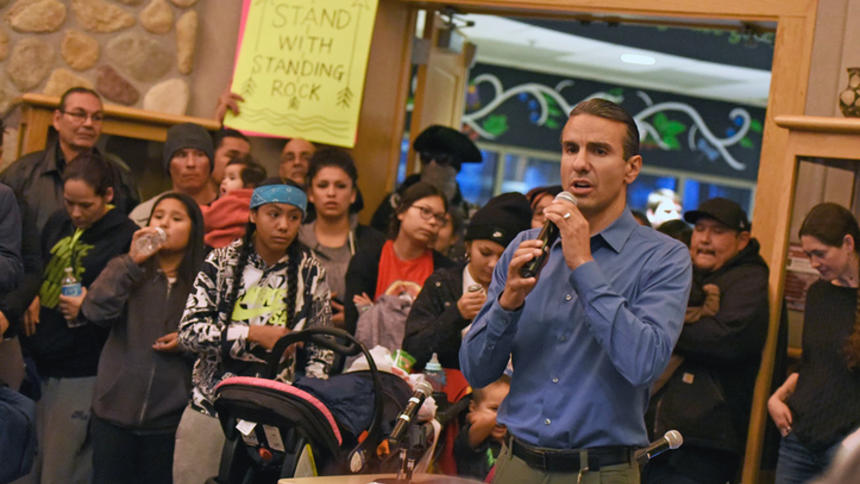
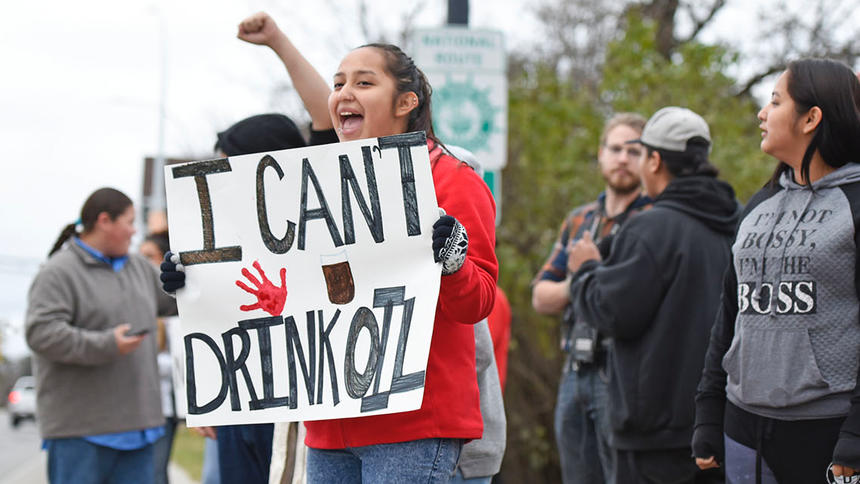
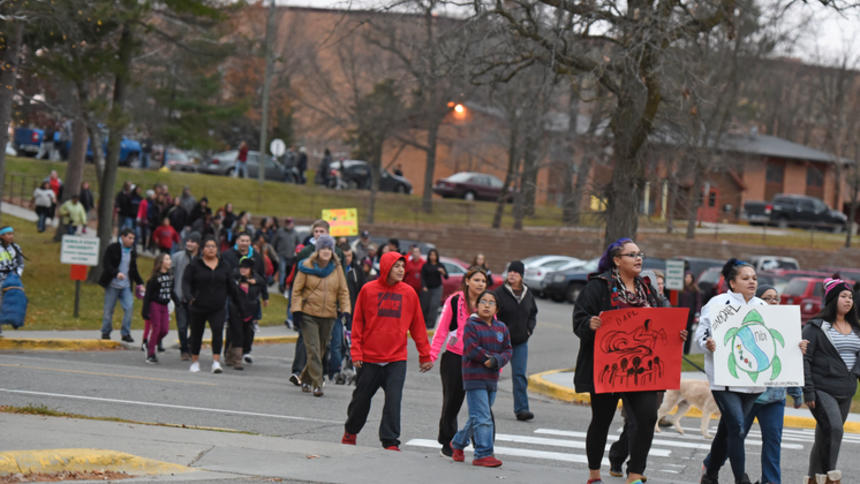
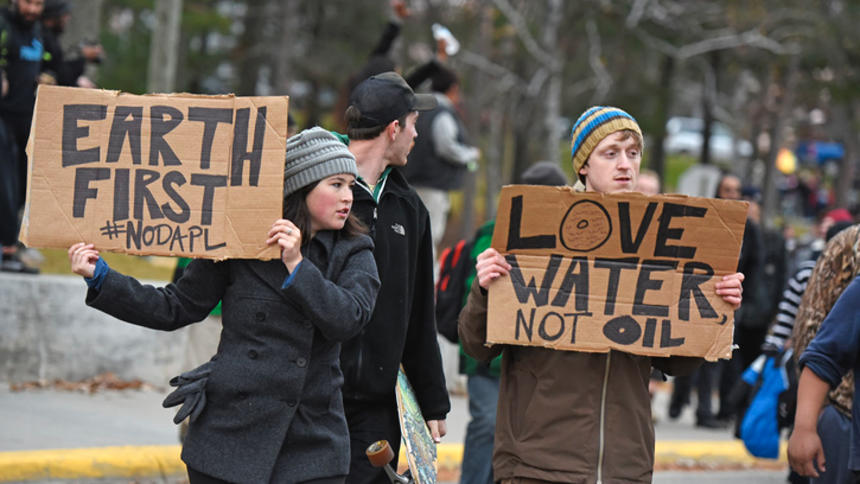
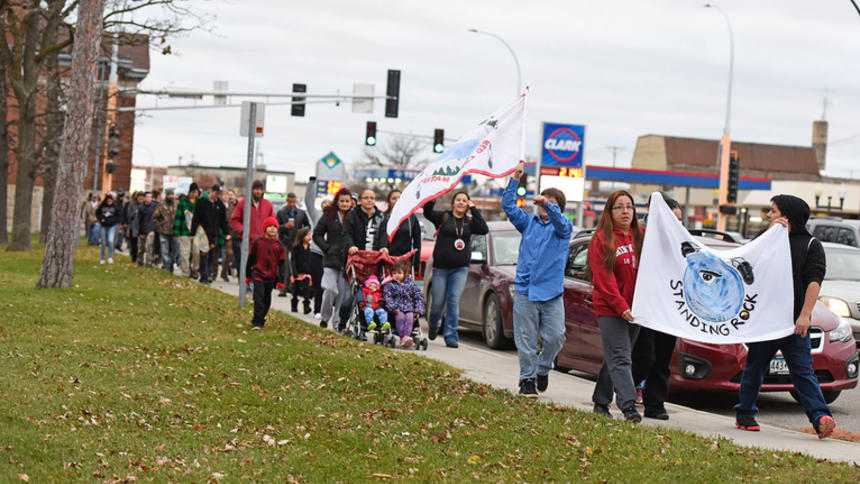
BEMIDJI — Though hundreds of miles away from the heart of demonstrations against the Dakota Access Pipeline, scores of Bemidji-area residents marched through the city Tuesday, chanting “water is life” in a show of support for those on the front lines of anti-pipeline protests.
Tuesday’s demonstration, sponsored by four local groups, was planned after police officers in riot gear used pepper spray and other deterrents to evict protesters from North Dakota land owned by the pipeline company. Organizers hoped the Bemidji rally would allow the community to come together and reflect on the events, as well as learn more about the issues surrounding the pipeline construction.
“One of my experiences being Native is often being marginalized and invisible in a larger national narrative,” said Anton Treuer, a Bemidji State University professor who spoke at the rally. “There are lots of issues around social justice and environmental concerns but Native land rights, sovereignty and the specific impacts on Native people are not something that everyone is…well aware of.”
Activists have been protesting the proposed pipeline — which they claimed would disrupt land sacred to the Standing Rock Sioux tribe, if completed. Protesters are also concerned that a leak from the pipeline would destroy the reservation’s only source of water.
A gathering at the Shaynowishkung — Chief Bemidji — statue kicked off the rally. Demonstrators held signs with messages including “Think 7 Generations Ahead,” and “Water is Life,” and waved to honking passersby.
Debra Warren, who lives in Bemidji and is from White Earth, joined other protesters at the statue. Warren feels strongly about the issue and said she is frustrated that oil companies can do whatever they want.
“(Oil companies) have the audacity to say ‘Oh, it’s not going to leak,’ when leaks happen every day,” Warren said. “I really disagree with how they treated the water protectors…they come pulling in with nothing short of tanks with unarmed, peaceful protest.”
After the half-hour-long gathering, demonstrators marched from the statue to BSU’s American Indian Resource Center, where they shared a meal and listened to activists and members of the public speak. Dallas Goldtooth, who works with the Indigenous Environmental Network, spoke to the crowd via Skype.
“It’s not just about this one pipeline,” Goldtooth demonstrators. “It’s all part of the greater fight against colonization.”
Goldtooth’s words echoed those of other speakers, who emphasized that the Dakota Access Pipeline is the tip of the iceberg.
“I think it’s important that we realize the impetus for this was the impact on an indigenous community and we not lose sight of that in the bigger picture, but at the same time there is a big picture,” Treuer said. “It is horrifying what human beings have been doing to this planet.”
Other attendees, like Larissa Harris, a University of Manitoba graduate student who lives in the area, said the events at Standing Rock will affect areas outside of North Dakota and that people worldwide should care about the issue.
“It may not affect us directly but the water that would be affected if this pipeline were to spill would affect millions of people and in the long run that would affect us,” Harris said. “That will affect us even if it’s not directly on our land in this area.”
Treuer reminded participants of the importance of the activism at Standing Rock.
“Even if a short-term battle is not decided in favor of the water protectors, the long-term battle must be,” he said. “The efforts and the protests is not just a bunch of angry Indians upset about a smaller local issue, but it is the point of the spear to change worldviews.”
